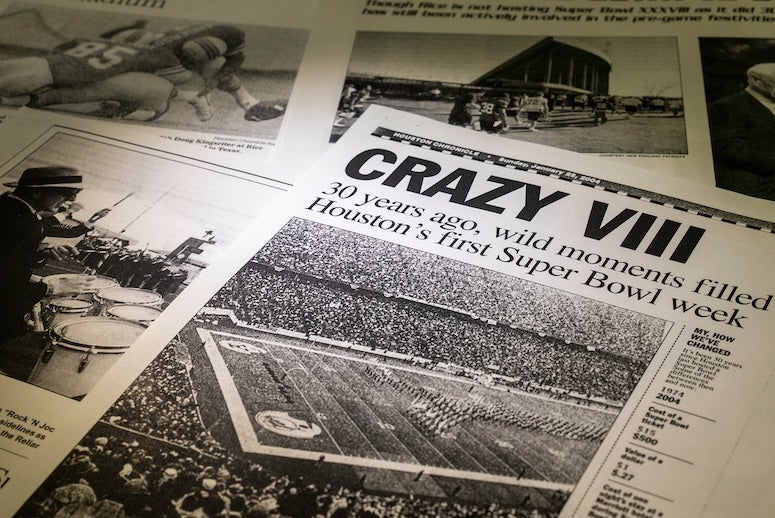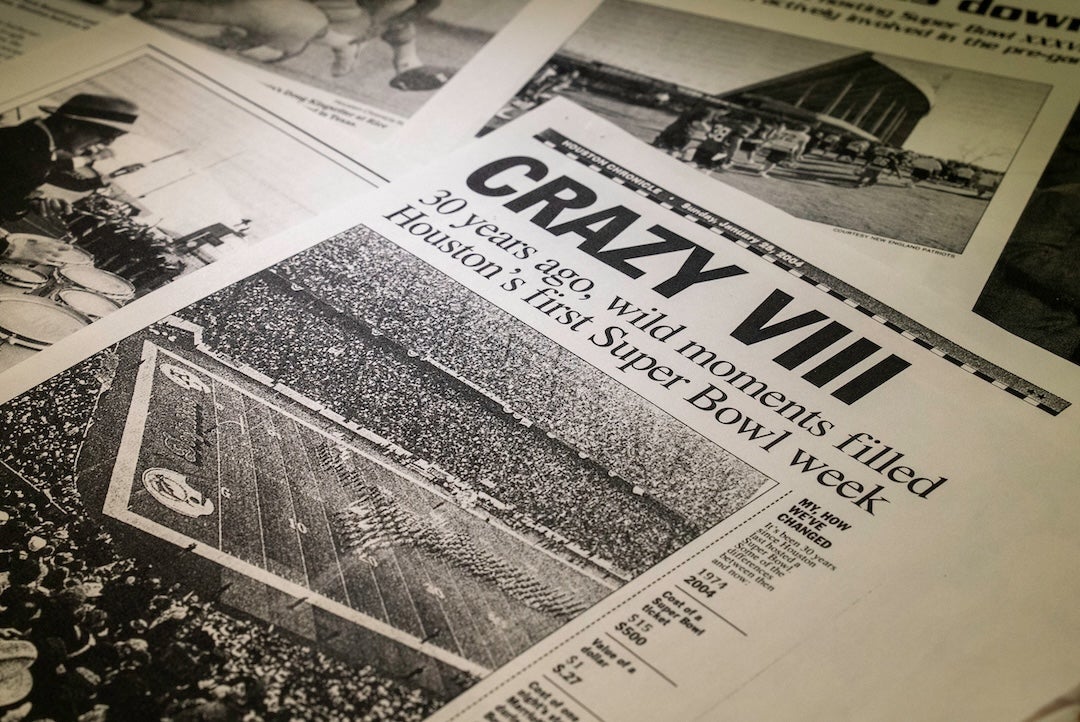
On a foggy, damp day in Houston on Jan. 13, 1974, just under 72,000 people packed into Rice Stadium to watch the Miami Dolphins take on the Minnesota Vikings in Super Bowl VIII.
Rice was no stranger to hosting professional football games, having hosted the Houston Oilers for three seasons that included their largest crowds until the “Luv Ya Blue” era. This particular event was special, however, not only because it was the first and only Super Bowl hosted at Rice Stadium, but it was the first to be played outside of Los Angeles, Miami or New Orleans.
“It’s very special that the first Super Bowl that was played in Houston was played here at Rice University because there was no other location that it could have been at the time,” said Amanda Focke, head of special collections at Rice’s Woodson Research Center. “It wouldn't have worked in the Astrodome because of the layout and the seating size. It’s just a neat football first for Rice.”
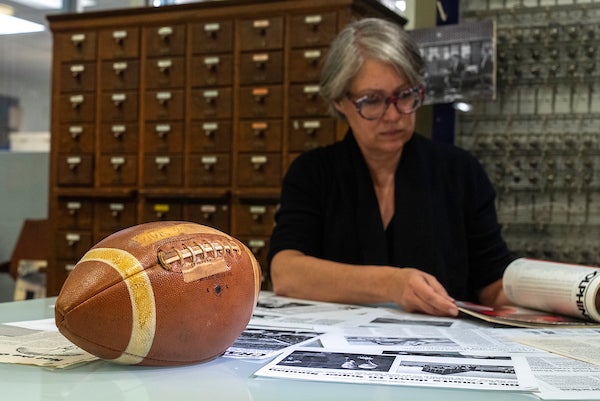
To recognize and commemorate Super Bowl VIII, the Woodson Research Center at Fondren Library holds an information file containing newspaper clippings, photos and magazine references to the game and an original Super Bowl VIII program.
“It’s always important to have those kinds of records around because they help you understand the present day more,” Focke said. “If you can look back and see the path of how you came to be where you are now, it helps you plan better for the future.”
Many at the time assumed the game would be played at the Astrodome, home of the Oilers. But its capacity of around 50,000 paled in comparison to Rice Stadium. The ability to handle a crowd of about 70,000 was a key selling point for the city in its bid to host the game.
Rice was also just the second on-campus facility to host a Super Bowl, with Tulane Stadium being the other. Since 1974, two other Super Bowls have been played at on-campus facilities (Stanford University in 1983 and Arizona State University in 1996). Tulane Stadium has since been torn down, and Stanford Stadium was rebuilt as a smaller facility, making Rice Stadium one of two existing on-campus stadiums to have hosted a Super Bowl.
For former Rice Athletic Director Bobby May, attending Super Bowl VIII created numerous first-time experiences he says he’ll never forget.
“I was actually coaching track and was the assistant business manager at the time,” said May, who served as AD from 1989-2006. He originally rejoined his alma mater as an assistant track coach in 1967 after a storied track and field career as an Owl.
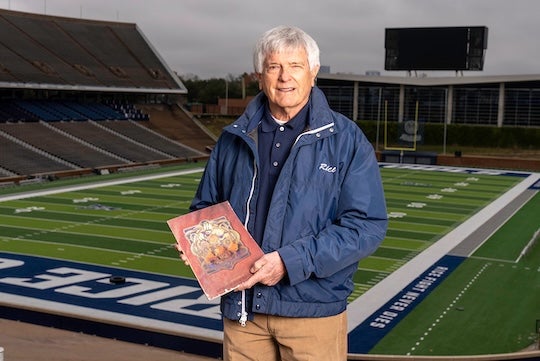
May served as the concessions manager during the game, hectically facilitating the sale of candy, peanuts, popcorn and the like to attendees.
“I was obviously pretty busy, so I didn’t see much of the game,” May said. “But looking back, with all that’s happened since with regard to that game, it makes you really appreciate being around at the time.”
May said there was one item sold during the NFL title game that had never been sold at Rice Stadium to that point: beer.
“The beer operation was pretty cool,” he said. “Lone Star was the beer we sold. Subsequent to that, a year or two later, we actually sold beer in the stadium for Rice games against opponents that were not state schools. It was against the law to do it against a state school, but you could against private schools.”
The game was also the first NFL matchup in Houston to be aired on local television with the NFL’s local blackout being lifted, May said. According to sportsmediawatch.com, the game had a total viewership of 51.7 million as the Dolphins defeated the Vikings 24-7.
May showed his marketing expertise prior to the game with an idea that contributed another “first” to Super Bowl history — selling programs in the community before the day of the game.
“That year, I had the bright idea of trying to sell the programs before the game, which before you could not buy unless you went to the stadium for the game,” he said. “Now you can buy them online everywhere else, but at that time you couldn’t.”
May said he made a separate agreement with the NFL to sell programs the week prior to the game in the community, at shopping centers and at various places around town.
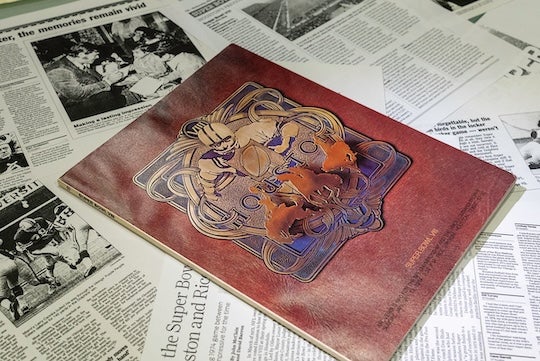
Of the 41,000 programs that were delivered to the stadium, 36,936 were sold during the game. And May managed to sell all 10,000 of the programs he purchased on the Friday and Saturday before the game, which was on a Sunday. Due to the lifted blackout, local viewers could then watch the game on TV and have a program.
“That worked out pretty well, and was the first time that was ever done,” he said. “It was an interesting experience to say the least.”
Super Bowl VIII was yet another example of the powerful history that Rice Stadium holds to this day, May said.
“It’s called ‘historic Rice Stadium’ for a reason,” he said. “With John F. Kennedy being there for his speech, the Super Bowl and the many concerts we hosted there — Billy Joel, Elton John, the Eagles, Pink Floyd — we had some really good times and some spectacular events there.”
For May, Super Bowl VIII was one of the many highlights of his 40-plus year career as an Owl.
“It’s certainly a big positive memory for me just because of the uniqueness of the situation, the people I got to meet and the actual event, seeing it happen and being a part of that,” he said. “I have great memories from that particular day and really from all my experience at Rice. It was just a really fortunate thing that I was able to be there for all that time. Lots of good memories.”

